Хаас за Португалия
Никита Мазeпин:
Looking back you had the chance to experience Pirelli’s Cinturato Blue and Green extreme wet and intermediate tires in Italy – but without the luxury of it being in a test or practice session. As a rookie, how much of a challenge was it to experience a Formula 1 car in the wet immediately in race conditions?
It was a big challenge, because obviously in the race nobody is taking it step-by-step or taking it easy, everyone’s pushing to the absolute maximum from the beginning. Therefore, without any practice, you can only guess the trajectory and the line. I’m just one of 20 drivers on the grid, and one of the three rookies, who had to deal with the same conditions – I think everyone was kind of equal there.
Two races in, two very different circuits and conditions faced through Bahrain and Italy. Information comes thick and fast in Formula 1. How big is the jump coming from Formula 2 in terms of the data you have to analyze and the time you have to process it as a driver in Formula 1?
It’s very big. I would say the amount of data that you’re able to collect in Formula 1, it’s probably triple or quadruple that of what you can get in Formula 2. So, it’s a part of your growth, in racing terms, to be able to understand this information and be in control of it.
Back-to-back race weekends offer little opportunity for reflection with the demands involved of moving on to the next race. As a driver how do you prepare for the intensity of back-to-back races – is it simply a case of the more track time the better for you?
I don’t change my approach. I love racing, I love what I do, and I’m very fortunate to be doing this as my job. Back-to-back weekends and the season getting intense is something that I’m massively looking forward to this year. I can’t say I’ve had this in the past, but I just have a good feeling about constantly driving and driving to get better at what I do.
What experiences do you have of testing or racing at Autodromo Internacional do Algarve in Portugal and what are the specific characteristics of the circuit you need to be aware of in a Formula 1 car there?
One of my first tests in a formula car was in Portugal at this track. I haven’t been there in over seven years, maybe eight if I’m a little mistaken, but this track is a special one. It’s a spectacular one to watch on television, and when you’re in the car you’re constantly going up and down – it’s like a rollercoaster. I’m looking forward to getting out there.
Circuit de Barcelona – Catalunya is a track familiar to you, most notably from the past two seasons competing in Formula 2. How much of an advantage for you is it to be heading to a circuit you’re familiar with? Does it simply provide a degree of confidence having that track familiarity or does it accelerate your thoughts on things like set-up, car balance etc?
It’s rather nice to be going to a circuit that you’ve raced at in the past few years. You know your braking marks, all your points, things like where to go on power and where to slow down. It definitely drops a few challenges, but at the same time I raced in Formula 2 with all the guys who are going there, so everyone will be feeling the same. But I’m not really paying much attention to those things this year. I’m just enjoying my time and the steps we’re making forward with the team.
Мик Шумахер: Looking back you had the chance to experience Pirelli’s Cinturato Blue and Green extreme wet and intermediate tires in Italy – but without the luxury of it being in a test or practice session. As a rookie, how much of a challenge was it to experience a Formula 1 car in the wet immediately in race conditions?
It definitely wasn’t easy to hop in directly to a full wet race. Obviously, most of the guys started on inters, and partially because we were a bit inexperienced, that’s why we chose to start on the full wets. It was definitely the easier and safer way but looking at it now with the experience that I have, I probably would have started on the inters. If we have a wet race again, and if it’s not 100 percent sure if it’s wet or inters, or if it looks like it’s going to dry up, then I’d definitely start on the inters. No situation is identical though, there’s always something new and something else happening. You have to assess it in the moment. There was definitely lots learned, it was great fun and a great experience. I liked the mixed conditions.
Two races in and you have encountered two very different circuits and conditions through Bahrain and Italy. How did you find the switch between the two tracks?
It was quite difficult jumping from a track where we had quite a bit of testing and then the race, to then move to a track where we barely had any free practice time and you have to straight away perform at your best level. It’s definitely not easy but it’s a nice challenge. I enjoy that challenge and I enjoyed Imola. I find that as a team we made a good step forward. We learned lots with lots to take into the next race weekend in Portimao.
Back-to-back race weekends offer little opportunity for reflection with the demands involved of moving on to the next race. As a driver how do you prepare for the intensity of back-to-back races – is it simply a case of the more track time the better for you?
I think that the back-to-back races are definitely interesting, there were loads of them last year obviously due to the difficult year everybody had. We too had to have a few back-to-backs in Formula 2 as we had to get a certain amount of races in. I think it’s important we asses everything that happens in the race week, take the positives and learn from the negatives, and then you bring those things straight into the next week. Obviously, there’s not a lot of time in-between, but I enjoy having back-to-back races as its just loads of mileage, lots of time in the car and time spent with the team. You spend a lot of time with your team anyway and now we get to do it consecutively and work together really closely throughout this time period.
What experiences do you have of testing or racing at Autodromo Internacional do Algarve in Portugal?
I tested there in 2018 in a GP2 car. It’s a great track, I really love driving on it. I think it’s like an old-school track, similar to Imola. It’s good for us too as teams don’t have a lot of experience there – just the experience from last year. I think that will bring the competition closer which is really good.
Circuit de Barcelona – Catalunya is a track familiar to you, most notably from the past two seasons competing in Formula 2. How much of an advantage for you is it to be heading to a circuit you’re familiar with?
Barcelona, I guess it’s not a huge advantage for me, firstly as I think everybody’s driven it and every team kind of does their baseline there. Every simulator you go to it’s mostly Barcelona as the track you start on and everybody has a lot of experience on it.
Гюнтер Щайнер: Reflecting on the Emilia Romagna Grand Prix, the pre-race rain meant your rookie drivers would face a wet start to the race – in just their second ever Formula 1 start. Did the team change its objective based off the conditions and do you see it as a positive that both Nikita and Mick have now experienced wet race conditions?
No, we didn’t change the objectives. We just got the rain and had to deal with it and learn from it. The drivers are drinking from a water hose at the moment, every grand prix is bringing something new up. For learning it’s ideal, just learning things like the processes and how to behave in these situations. Once you’ve done these things once, the second time – for sure, it brings a lot less stress I would say. Do you want it all at the beginning – maybe not, but if it comes, you take the experience. I think it’s a good thing all these new experiences.
The issue of track-limits was again present throughout much of the race weekend at Imola. How involved are you as a team principal with all the relevant parties on such matters?
I’m not directly involved but obviously I’ve got my opinion about it. For me, with the track limits, if there’s a safety issue – I’m for it, otherwise I wouldn’t be too concerned about it. Then again, the race director needs to have control over it because with a driver, if you give them a millimeter, they’ll take a centimeter. It’s in the hands of the race director to make the rules. If the teams and the drivers think it’s wrong, for sure we will let him know.
Formula 1 announced that the Miami Grand Prix will be on the calendar from 2022. As an American-owned team, how welcome is the news that a second race will be on the schedule in the United States and in particular, what do you feel Miami lends to the calendar?
I think to have a second race in the United States is fantastic for the sport in general. I know that the viewership in the States is increasing, which is good for Formula 1 and obviously for us too being the only American team as well. So, there is no negative to this. Miami is a great place to have a race – it’s a great city. For me personally, its one race with no jet lag, so that helps as well as I live on the east coast. I’m really looking forward to Miami as it’s always exciting there.
Next up we have back-to-back race weekends in Portugal and Spain. In your opinion, what’s a successful outcome from the two events for both the team and your drivers?
Nothing different from the first two races – get as much experience as possible, get both drivers to the finish in both races, keep learning and increase their race knowledge in Formula 1. The target has not changed, we just keep our heads down and learn as much as possible.


















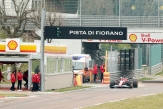
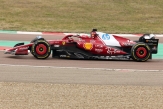
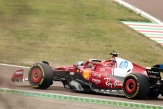

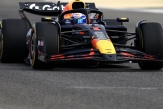
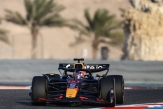
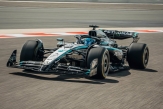
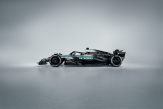
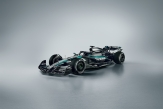
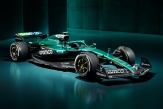
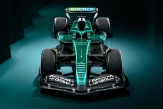
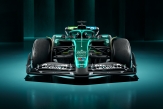
.jpg)
.jpg)
.jpg)
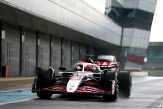
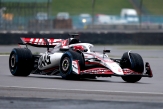
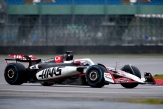
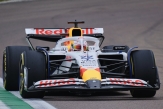
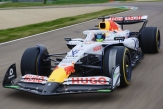



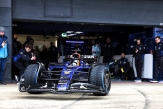
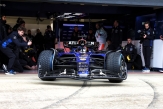
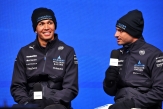

06/11/2025 от Огнян Тенчев (drJeckyll), няма коментари